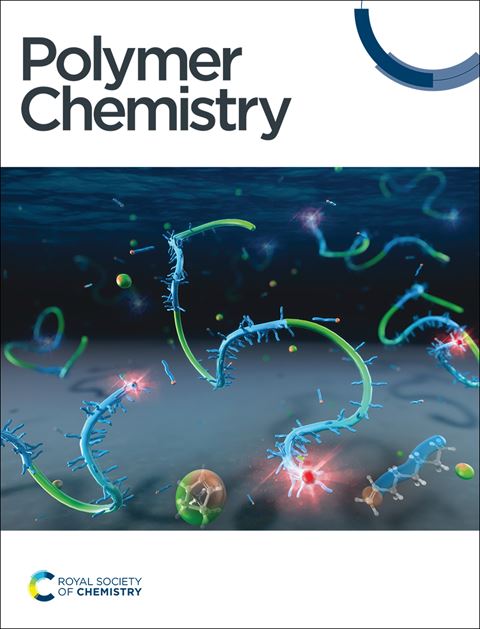水包油乳状液中碱木质素的简单分散和臭氧化稳定
IF 4.1
2区 化学
Q2 POLYMER SCIENCE
引用次数: 0
摘要
碱木质素经过一系列的工艺处理,使水包油(O/W)乳状液稳定。首先,只需使用水/丙酮混合物并使丙酮蒸发,就可以将90%以上的木质素分散在纯水中,而无需进行化学修饰。得到的木质素分散体进行臭氧化反应,不需要任何额外的步骤,导致羧酸含量增加(+193%),通过酚类结构的有效裂解(-93%),木质素摩尔质量降低,这是由31P定量核磁共振、2D HSQC核磁共振、FT-IR光谱和粒径排除色谱证实的。这些特性使得碱木质素很容易在水中再分散。臭氧化前后木质素的水分散体具有酸性pH和双峰纳米结构。这些纳米对象对界面具有很强的亲和性,特别是臭氧化木质素能够将水的表面张力降低到48 mN/m,将水/葵花籽油体系的界面张力降低到8 mN/m。因此,这两种木质素都参与了油水乳状液的制备,并能够通过皮克林机制稳定微尺寸的油滴,在加速和实时条件下(30天)防止油释放。这些结果表明,从简单加工的木质素中可以获得稳定的乳液,用于化妆品配方或农化或制药工业中疏水化合物的包裹。本文章由计算机程序翻译,如有差异,请以英文原文为准。
Alkali Lignin Stabilization of Oil-in-Water Emulsions via Simple Dispersion and Ozonation Processes
An alkali lignin was subjected to successive processes enabling the stabilization of oil-in-water (O/W) emulsions. Firstly, by merely using a water/acetone mixture and evaporating acetone, more than 90% of this lignin could be dispersed in pure water, with no chemical modification involved. The obtained lignin dispersion was then subjected to an ozonation reaction, without requiring any additional steps, resulting in an increase of the carboxylic acid content (+193%), through effective cleavage of phenolic structures (-93%), and a decrease in the lignin molar masses, as evidenced by 31P quantitative NMR, 2D HSQC NMR, FT-IR spectroscopy and size-exclusion chromatography. These features allowed this alkali lignin to be easily re-dispersed in water. Aqueous dispersions of lignin before and after ozonation were characterized by an acidic pH and a bimodal nano-objects composition. These nano-objects exhibited a great affinity for interfaces, especially the ozonated lignin with an ability to reduce the surface tension of water down to 48 mN/m and the interfacial tension of a water/sunflower oil system down to 8 mN/m. Both lignins were consequently involved in the preparation of O/W emulsions and were able to stabilize micro-sized oil droplets, through a Pickering mechanism, preventing oil release under both accelerated and real-time conditions (30 days). These results demonstrated that stable emulsions could be obtained from simply processed lignins for potential applications in cosmetic formulations or for the entrapment of hydrophobic compounds in the agrochemical or pharmaceutical industries.
求助全文
通过发布文献求助,成功后即可免费获取论文全文。
去求助
来源期刊

Polymer Chemistry
POLYMER SCIENCE-
CiteScore
8.60
自引率
8.70%
发文量
535
审稿时长
1.7 months
期刊介绍:
Polymer Chemistry welcomes submissions in all areas of polymer science that have a strong focus on macromolecular chemistry. Manuscripts may cover a broad range of fields, yet no direct application focus is required.
 求助内容:
求助内容: 应助结果提醒方式:
应助结果提醒方式:


